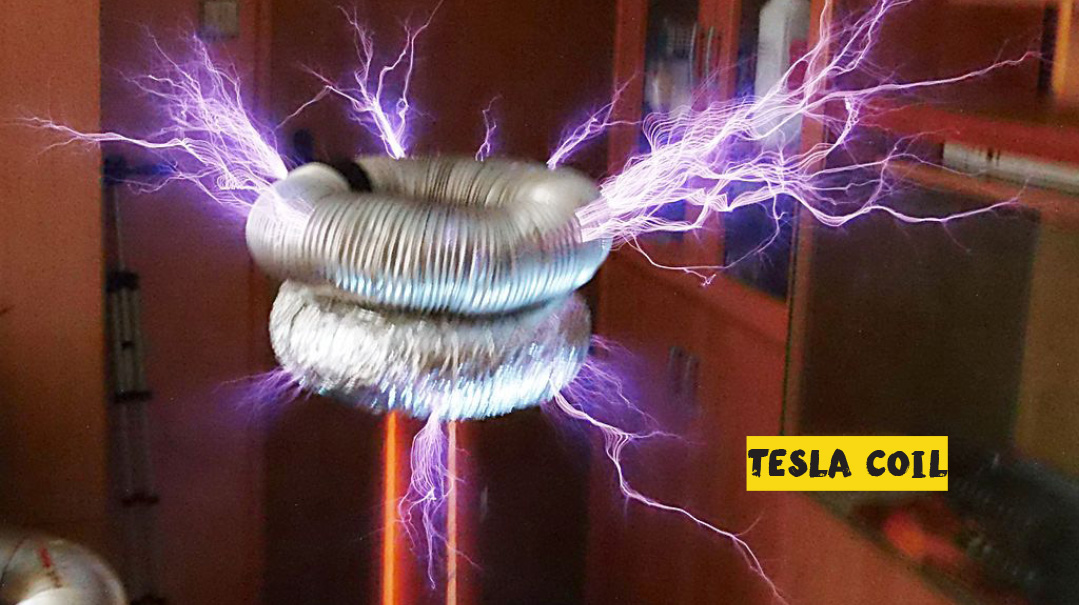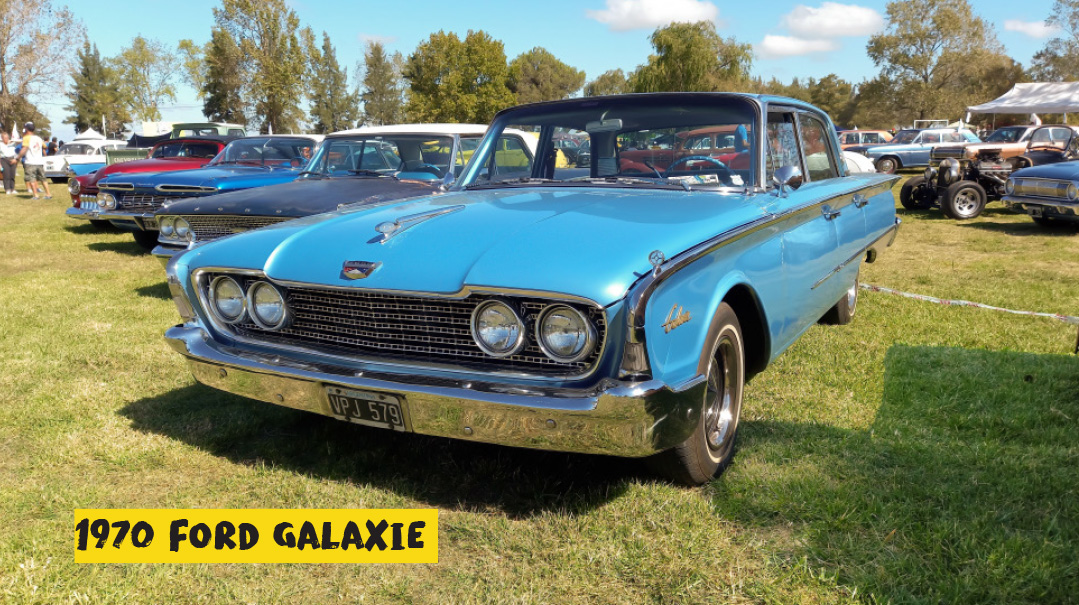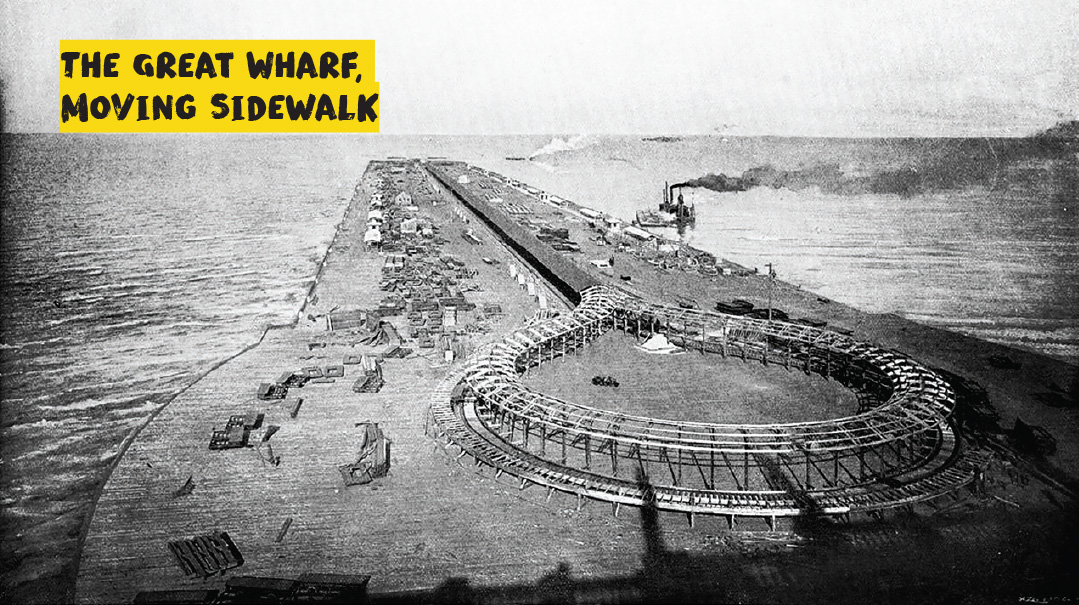Inventions that Didn’t Change the World

Here are a bunch of awesome inventions that could have, — should have — changed the world forever, but didn’t

There are so many inventions that changed the world. Electricity, the telephone, trains, airplanes, cars. But for every invention that made it, thousands more never took off.
Here are a bunch of awesome inventions that could have, — should have — changed the world forever, but didn’t.

Going Wireless
Nikola Tesla is the famous Serbian-American inventor who changed the world of electricity. In 1888, he invented the alternating current (AC), which made electricity cheaper and more efficient. It’s still the form of electricity used to power homes and businesses today.
Tesla (the inventor, not the car brand that’s named after the inventor) made many important inventions that are still used today, like Tesla coil — an induction coil that produces high-frequency AC and is used in radio and other electronic equipment.
World Wireless System
But one of Tesla’s more radical inventions never saw the light of day. After inventing a type of electricity that needed wires, he began to dream of electric energy that was wireless. He called his dream the “World Wireless System,” because he wanted to use it to connect the entire world. Imagine being able to send messages to all parts of the world at once!
Um, I can totally imagine that. Isn’t it called radio waves? Well, yes, it is. In 1888, Heinrich Hertz had discovered radio waves, which were soon used to transmit messages. But many scientists, including Nikola Tesla, believed that radio waves could only travel in a straight line (like light waves), and would get lost in the atmosphere. (Spoiler: They were wrong.)
Tesla decided that he could find something better than radio waves. He had already invented the wireless lightbulb — a long tube filled with gases that lit up when it came near an electric current. Seeing that wireless was definitely a thing, he wanted to take it to the next level. He figured that he could somehow use the Earth’s own electrical charge to transmit electricity without wires or cables.
He convinced the powerful banker, J. P. Morgan, to fund his invention, and built a power plant on Long Island. The Wardenclyffe plant in Shoreham, NY was a power plant like no other. It was a wireless plant. The plain brick building had a huge wooden structure on it with an even bigger metal cupola (dome) that Tesla called a “magnifying apparatus for transmitting electrical energy.” Inside was a huge steel shaft that was buried into the ground. Tesla believed that he could inject the Earth with an electrical current, and that the Earth’s electric charge would transmit the current to power devices all over the world.
Competition
But Tesla had a competitor in the wireless business. Remember Heinrich Hertz’s discovery of radio waves? Guglielmo Marconi was an Italian inventor who figured out how to use those radio waves to communicate. Basically, Marconi invented the radio! In 1897, he managed to send the first radio message to a ship off the coast of Long Island. J. P. Morgan loved it! The banker loved Marconi’s wireless invention even more when, in 1901, the inventor sent a wireless transmission all the way across the Atlantic. Tesla, on the other hand, had yet to produce results. Morgan refused to give Tesla any more money for his grandiose plan, and the World Wireless System was officially kaput.
Eyewitnesses say that for a few days in 1903, just after Morgan pulled his funding from Tesla, the Wardenclyffe tower shot off bright flashes into the sky. The currents were so strong, they looked like lightning going in the wrong direction. But after that, Wardenclyffe never operated again.
In 1917, Wardenclyffe Tower was demolished and sold for scrap materials to help pay off Nikola Tesla’s debts. His invention that never happened was his undoing. Nikola Tesla may have died a pauper, but his World Wireless System paved the way for today’s wireless charging technology and global wireless networks (like Wi-Fi). Tesla’s failed invention was way before its time. Now that wireless technology is a reality, everyone agrees that Nikola Tesla’s big dream paved the way.

Oglemobile
Nowadays, cars can drive an average of 25 miles for every gallon of gas. In the 1970s, cars were much less efficient and used way more gas. A 1970s car drove about 12 miles for every gallon.
But all that was about to change.
Fuel Vapors Do the Trick!
It started with a lawnmower in El Paso, Texas. One day in 1977, a young mechanic named Tom Ogle was tinkering with his lawnmower when he accidentally made a hole in the fuel tank. He managed to solve the problem somehow (it’s way too complicated to explain, so just trust me here) and was amazed by what he discovered. The lawnmower kept running and running, but the fuel level stayed the same! The motor ran for 96 hours using just the fuel that was already in the tank! Tom realized that the lawnmower didn’t need the actual fuel; it could run on the fuel vapors alone.
In a nutshell, he had figured out a way to get an engine to run using fuel vapors. That uses much, much less fuel than running on actual fuel.
200 Miles per Gallon
Tom was a smart guy, so he tried it out on his car next. Now, before he starting tinkering under the hood, his car drove 13 miles on the gallon. It was trial and error for a while, but eventually Tom managed to rig his car so that it did more than 100 miles per gallon. To test his new invention, he drove his 1970 Ford Galaxie 200 miles from El Paso, Texas to Deming, New Mexico and back. He started out with precisely two gallons of gas in his tank, and didn’t have to fill up even once.
Tom Ogle’s invention took the world by storm. Naysayers accused him of cheating and lying. But scientists and engineers, and even the US government, checked his test cars and couldn’t find any evidence of fraud. His invention was dubbed the “Oglemobile.”
The Oglemobile didn’t just use less fuel. It also caused far less emissions. Tom Ogle’s invention promised a cheaper, more energy efficient and more environment friendly way to travel. He was only in his 20s when he started his company, Ogle Fuel Systems, and planned to sell his invention for just $100 a unit. Ogle Fuel Systems should have gone on to become one of the world’s largest companies, and Tom Ogle should have become rich beyond his dreams.
A Mysterious Ending
But that didn’t happen. It wasn’t because no one wanted it. In fact, countless companies offered to partner with Ogle. Think big car manufacturers like General Motors and Ford, and even Shell Oil. But not everyone wanted an invention that would change the world.
In 1978, just after his invention had gone public, reporter Ron Layton interviewed Ogle.
“Tom, I think you are one of the most important people on earth right now,” Layton said.
“I hope so,” Tom Ogle replied. “My invention will save the world.”
“Are you afraid of oil companies or the Arabs coming after you?” Layton asked. After all, the oil companies and the Arab countries who are the largest oil producers would have a lot to lose if Ogle’s invention took off.
“No. Not anymore. I’ve had too much publicity,” Tom said. “If I’d kept my invention a secret I might be worrying. But there’s nothing to worry about any more.”
A year later, Tom Ogle was working with Advanced Fuel Systems Inc. (AFS) and earning thousands of dollars every month. But soon after, AFS told him that they were working on a similar invention and didn’t need him anymore. Two years after that, Tom was shot in the street. Luckily, he survived, but the shooter was never caught. Just four months after the shooting incident, Tom was found dead. His top-secret invention died with him.
Was Tom Ogle’s death an accident? You tell me.

Moving Sidewalks
The moving walkways in airports sure are fun. What if sidewalks had them too? Well, they almost did.
Three Tiers of Walkways
In 1871, inventor Alfred Speer dreamed of a world where the walking was done for you. His vision included sidewalks that had not one, but three moving walkways. Each walkway would move at a different speed. If you wanted to enjoy the weather, you could glide along at a comfortable 3 miles per hour on the slowest walkway. If you were in a hurry, you’d obviously go for the fastest walkway. The walkways would have benches every so often so you could rest your poor feet that were exhausted from, you know, walking so much. And if you’re already transforming the street so radically, why not go crazy and add a train? Well, that’s exactly what Speer did. By 1874, Speer’s imagination had gone wild and he wanted to enclose moving “parlor cars” alongside the walkways, where women could sit and schmooze, and men could sit and smoke cigars.
World, Meet Walkway
Speer had some colleagues with similar ideas. In the 1893 Columbian Exposition in Chicago, the world’s first moving sidewalk was built down the length of a lakefront pier. It had been designed by architect Joseph Lymen Silsbee. It was very similar to Speer’s idea, in that it featured one walkway for standing or strolling and another for sitting. But it broke down a lot, which ruined the fun factor. In the 1900 Paris Exposition, another moving walkway was built. This one was very cool, and there’s even a video of it in action. In 1924, Atlanta City officials seriously considered installing a similar system downtown. Sadly, they never did.
Fifty Years into the Future
In the 1920s, people liked to imagine that the world would look completely different in fifty years. The famous science-fiction writer Hugo Gernsbacher wrote an article in which he described the cities of the future. He wrote: “Below the elevated railway we have continuous moving platforms. There will be three such moving platforms alongside of each other. The first platform will move only a few miles per hour, the second at eight or ten miles per hour, and the third at twelve or fifteen miles per hour. You step upon the slowest moving one from terra firma [solid ground] and move to the faster ones and take your seat.”
Obviously, moving walkways have since become a thing. But they never became as extravagant as Alfred Speer’s invention or Gernsbacher’s prediction.

Greek Fire
This is an invention that dates all the way back to the Byzantine Empire in the 7th Century. Just to make things confusing, the Byzantines were Greek, too (they just weren’t the ancient Greeks like the ones from the Chanukah story). Hence the name “Greek fire.”
I can’t tell you for sure what Greek fire actually was because no one really knows. But I can tell you what it did. It was some sort of burning liquid. The Byzantines used it to set fire to enemy ships during naval battles. Its “magical” property was that it could burn even on the surface of the water. In fact, some historians believe that it ignited when it came into contact with water. The Byzantines invented a device like a flamethrower that could shoot the burning liquid onto the enemy. There were only a few substances that could extinguish Greek fire, including vinegar and sand.
During the Byzantine Empire, the secret weapon was called all sorts of mysterious names, like sea fire, war fire, liquid fire, sticky fire, and manufactured fire. Clearly, this flaming weapon was terrifying. Historians believe that the Byzantines won many wars with their Greek fire.
Greek fire helped the Byzantine Empire to expand across southern Europe, North Africa, and Asia Minor. It even helped them overcome many sieges of Constantinople, which was the seat of the empire.
When the Byzantine Empire was finally defeated by the Ottomans in 1453, the secret recipe for Greek fire was lost to the world forever.
Inventions are a tricky thing. Even the greatest ones are threatened by politics, war, and intrigue —which makes you appreciate the inventions that did make it to fruition even more!
(Originally featured in Mishpacha Jr., Issue 940)
Oops! We could not locate your form.












